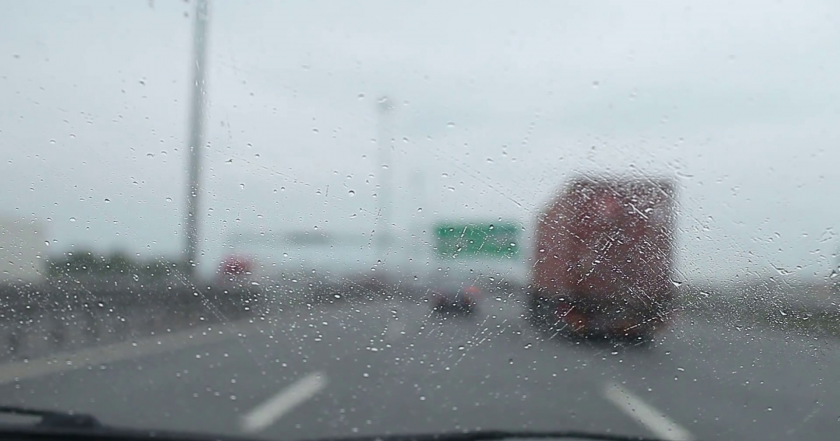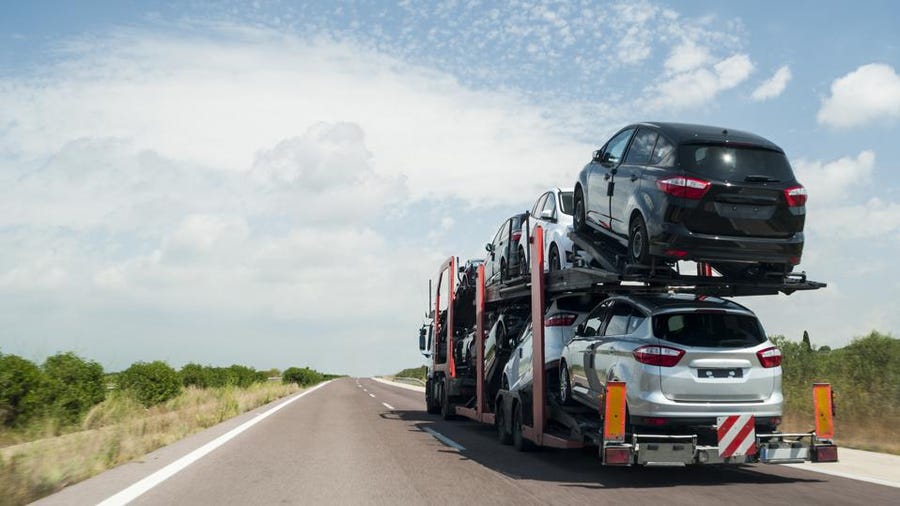The transportation systems are designed to withstand local weather and climate conditions in the United States. Climate changes are predicted to increase the frequency and intensity of some extreme weather events. In particular, heatwaves are likely to be stronger, sea-level rise could increase coastal storm surges, and precipitation is expected to be more intense.
These changes may increase the risk of delays, disruptions, damage, and failures in transport systems. Climate change is likely to affect roads, ice roads, and vehicles.
Climate Change Impacts on Roadways
Especially higher temperatures can cause the pavement to soften and expand, creating rutting and potholes, particularly in high-traffic areas and stress bridge joints. Heavy rains can lead to flooding, traffic disruption, construction delays, weakening or erosion of soil and culverts that support roads, tunnels, and bridges.
Flooding and heavy snowfall also shorten the life of highways and roads. Loading with water and snow can cause damage that requires more frequent maintenance, repair, and refurbishment. Warmer temperatures are predicted to lead to more winter precipitation, which will fall as rain rather than snow in some places. Winter floods may occur more frequently if the frozen ground cannot absorb rainfall. Because soils are more exposed to rainwater, landslides and washouts can also occur more regularly. Drought in areas such as the southwest can increase the chance of wildfires that reduce visibility and threaten roads.
Climate Change Impacts on Ice Roads
In Alaska, the cold temperature impacts ice road transport. There are various ice roads in the U.S., such as Lake Superior(2miles) and links Bayfield. In Alaska, a 25-mile ice road serves an oil field on the Arctic Ocean, and the speed limit is 10 miles per hour.
Climate Change Impacts on Vehicles
As temperatures rise, many cars can overheat, and tires wear faster. However, milder winters, fewer cold days, later winter freezes, and earlier spring thaws can reduce vehicle damage in cold weather.
States that are the Most Vulnerable to Climate Change
Several states are particularly susceptible to climate change, putting them at greater risk of natural disasters that will affect everything from physical safety and life expectancy to property and assets.
Florida
Climate change threats are – extreme heat, drought, wildfires, inland flooding, and coastal flooding. The rising frequency and intensity of hurricanes could lead to heightened levels of injury and death in Florida state. Florida has 10 of the hottest U.S. cities. Hurricanes also create their ideal breeding conditions, lengthening mosquito season into the winter. Heavy rains, storm surges, rising sea levels, and the receding Atlantic coastline cause flooding to increase the risk of damage.
California
Climate change threats are – extreme heat, drought, wildfires, inland flooding, and coastal flooding. King tide-driven floods caused by the tides can destroy everything around because the sea level rises around the state. Forest fires and wildfire smoke also cause irreparable damage. The number of days with high wildfires s expected to increase. Drought and hotter temperatures are resulting in the wildfire crisis in the West.
Louisiana
Climate change threats are – extreme heat, drought, wildfires, and coastal flooding. The state is also getting hotter, New Orleans is the 15th most desirable city, and summer drought levels are expected to double.
Increased torrential rains will cause immense amounts of flooding.
Texas
Climate change threats are – extreme heat, drought, wildfires, inland flooding, and coastal flooding. Already-hot Texas is getting even hotter. It is home to nine of the most desirable cities in the U.S., with McAllen taking the second slot as the most burning city in the U.S. after Miami. Stronger Atlantic hurricanes also elevate the risk.
And hailstorms add to climate risks, potentially causing massive damage. The outlier winter storm in usually-hot Texas was linked to the rapid Arctic warming.
Mississippi
Climate change threats are – extreme heat, drought, wildfires, inland flooding, and coastal flooding. Hotter weather means more mosquito days. Tinder-dry conditions and extreme heat also put 57% of the state at a higher risk of wildfires, with the same public health risks as California (above). The States, situated near the Mississippi River, is famous for river flooding and earthquake risks.
Because of its vast size, the United States has a variety of climates spanning:
· A tropical climate in Florida
· A subarctic climate in Alaska
· A semi-arid desert climate in Arizona
· An alpine setting in the mountain states
There are about 26 different Köppen climate types in the U.S.
The farther away the state is situated from the equator, the colder it is, and the states, and cities closer to the equator, have warmer climates.
The Coldest U.S. States
The northern states of the U.S. are farther from the equator and thus have colder temperatures.
Here are the ten states of the U.S. with the lowest average temperatures:
Alaska
Alaska is the coldest state. The average temperature in Alaska is 26.6°F and can drop as low as -30°F during the winter months. The Fairbanks area has the hottest and lowest temperatures. The state, with summer highs of 90°F and lows of around -50°F.
North Dakota
In North Dakota, the average temperature is 40.4°F. The average temperature is around 24°F, ideal for winter activities such as snowmobiling, cross country skiing, ice skating, and ice hockey. January is the coldest month in North Dakota, with temperatures ranging from 2°F in the north to 17°F in the south.
Maine
Maine – average temperature 41°F. During the winter, Maine has an average low temperature of 12°F and heavy snowfall.
Minnesota
Minnesota is in the Upper Midwest region of the United States and touches Lake Superior in the northeast. The state’s climate is strongly influenced by its latitude and proximity to Lake Superior. January is the coldest month in Minnesota, with temperatures falling as low as -30°F in the northern parts of the state. The average temperature in Minnesota is 41.2°F.
Wyoming
In Wyoming, the average temperature is 42°F, and the average minimum temperature in winter ranges from 0°F to 15°F. Wyoming’s highlands and mountain peaks can receive up to 200 inches of snow in winter, while the lowlands typically accumulate about 50 inches. In addition, wind speeds usually range from 30 to 40 mph, with gusts up to 50-60 mph.
Montana
In Montana, the average temperature is 42.7°F. In Montana’s coldest month, January, the average temperature is around 0°F. Western Montana has a Pacific coast climate and milder winters.
But the eastern part of the state has a semi-arid continental climate with much colder winters.
Vermont
During the winter, Vermont’s average temperature is 22°F, and the average low is 2°F. Summers in Vermont tend to be mild, with temperatures ranging from 75°F to 82°F drop to the 50s. Vermont is also the snowiest state in the U.S., with about 89.25 inches of snow annually.
Wisconsin
Lake Superior and Lake Michigan are the border parts of the state, contributing to its long, snowy, and freezing winters. More than 160 inches of snow can fall in northern and western Wisconsin, and about 40 inches of snow per year can be expected in the rest of the state.
New Hampshire
New Hampshire – The average temperature in New Hampshire is 43.8°F. In January, the coldest month in the state, temperatures range from -4°F to 15°F. Northern parts of New Hampshire are subject to Arctic solid winds from Canada, causing more aggressive cold fronts. Usually, in Summer, temperatures are mild and range from 70°F to 85°F.
Idaho/Michigan
Idaho and Michigan are the tenth coldest states in the U.S. Michigan’s proximity to the Great Lakes and location in the Midwest strongly influence its climate. The northern parts of Michigan experience temperatures below 0°F at night during the winter, while the western regions receive 150 to 180 inches of snow per year. The average minimum temperature in Idaho during the winter is -2°F to 22°F.
The USA is a country with a vast area, so people in the USA often need to transport their cars, motorcycles, bikes, and vehicles from state to state all over the USA safely. Do you need a trustworthy company for your car to be shipped soon? You don’t need to waste your time and nerves on searching, as the professional team of Tempus Logix is here to help you.





